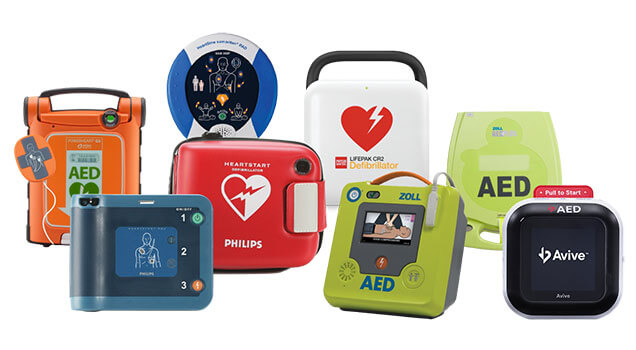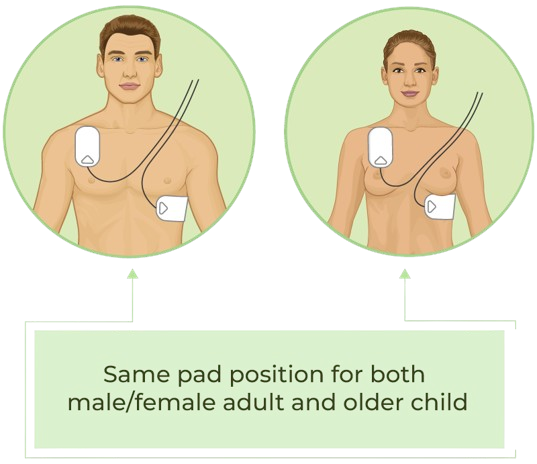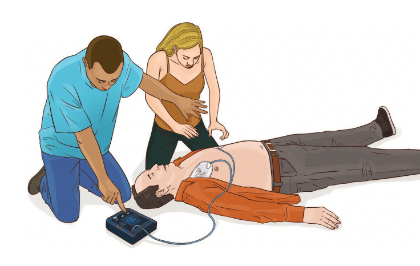3.6 AED for Adults and Children 8 Years and Older
How an AED Works

This shock effectively resets the heart’s electrical system, allowing an organized heart rhythm to return. If normal rhythm is restored and CPR continues, the heart muscle may begin contracting and pumping blood efficiently again—a condition known as Return of Spontaneous Circulation (ROSC).
Using an AED
AED equipment may vary by model and manufacturer, but all devices operate using a similar step-by-step process. While it’s important to be familiar with specific AED models available to you, most AEDs follow universal guidelines.
Step-by-Step AED Operation
- Open the AED case and power on the device if required.
-
Attach AED pads to the victim’s bare chest
×Attach AED pads to the victim’s bare chest © FAW Training Solutions – All rights reserved
© FAW Training Solutions – All rights reserved- Choose adult pads for victims 8 years or older.
- Peel the backing away from the adhesive pads.
- Follow the placement instructions on the pads and attach them to the victim’s chest.
- If required, connect the pad cables to the AED unit.
- “Clear” the victim and allow the AED to analyze:
- When prompted, ensure no one is touching the victim during analysis.
- Some AED models require you to press a button to begin analysis, while others start automatically.
- If shock is advised:
- The AED will instruct you to clear the victim before delivering the shock.
- Ensure that no one is touching the victim and loudly say, “Clear the victim!” or “Everybody clear!”
- Visually confirm that no one is in contact with the victim.
-
Press the “shock” button
if required (some AEDs deliver the shock automatically).×Press the “shock” button
 © FAW Training Solutions – All rights reserved
© FAW Training Solutions – All rights reserved - After shock delivery or if no shock is needed:
- Immediately resume CPR.
- Continue chest compressions and rescue breaths as instructed.
- Reassess after 5 cycles or 2 minutes of CPR:
- The AED will prompt you to analyze the heart rhythm again.
- Follow the AED’s guidance and repeat the process as needed.
